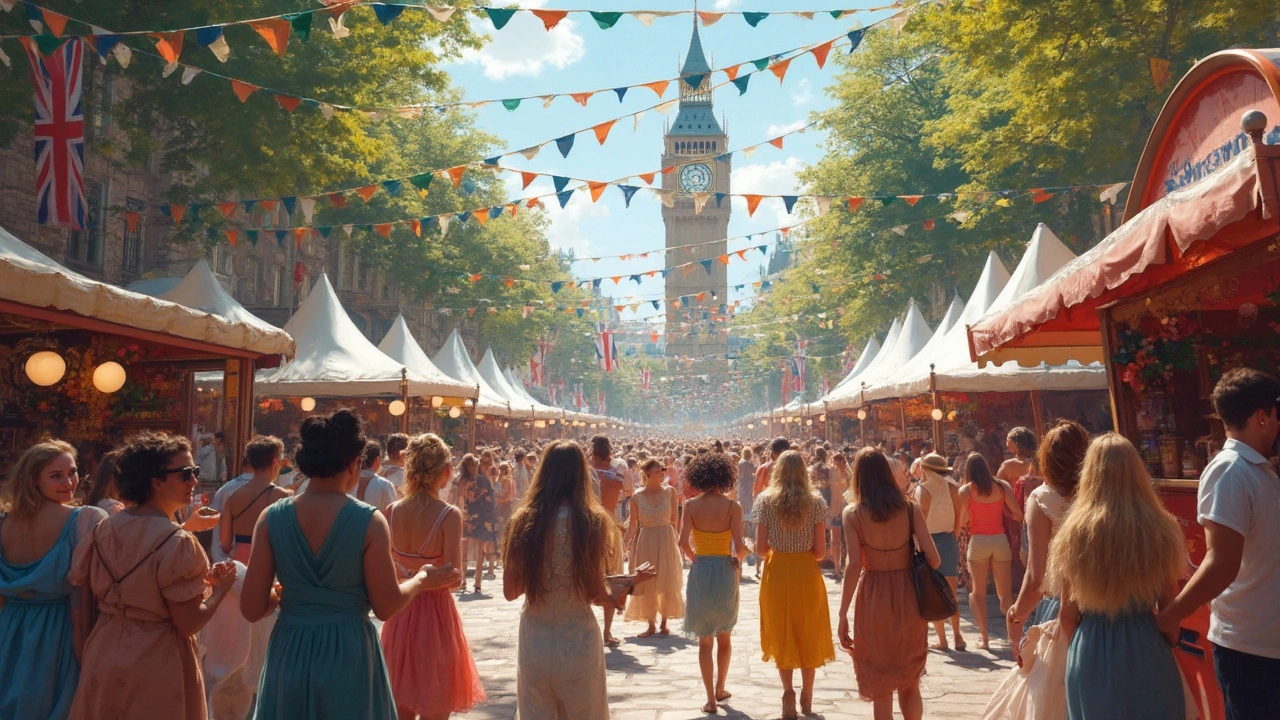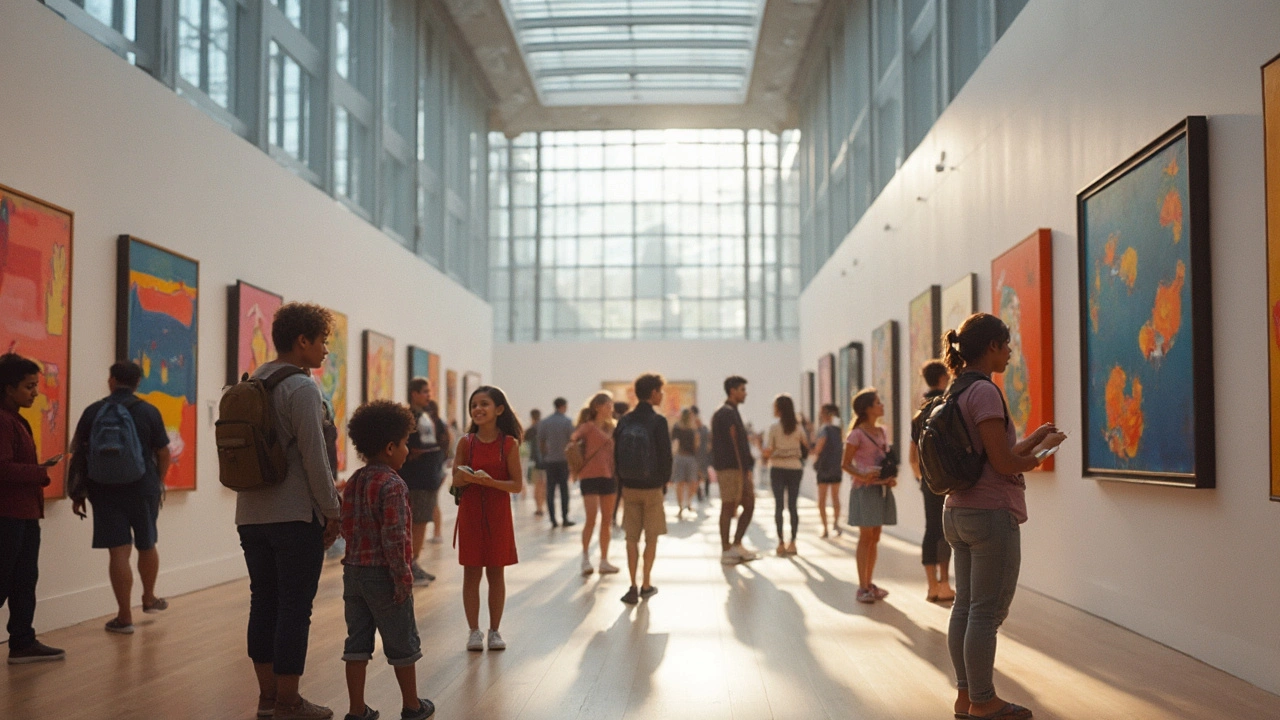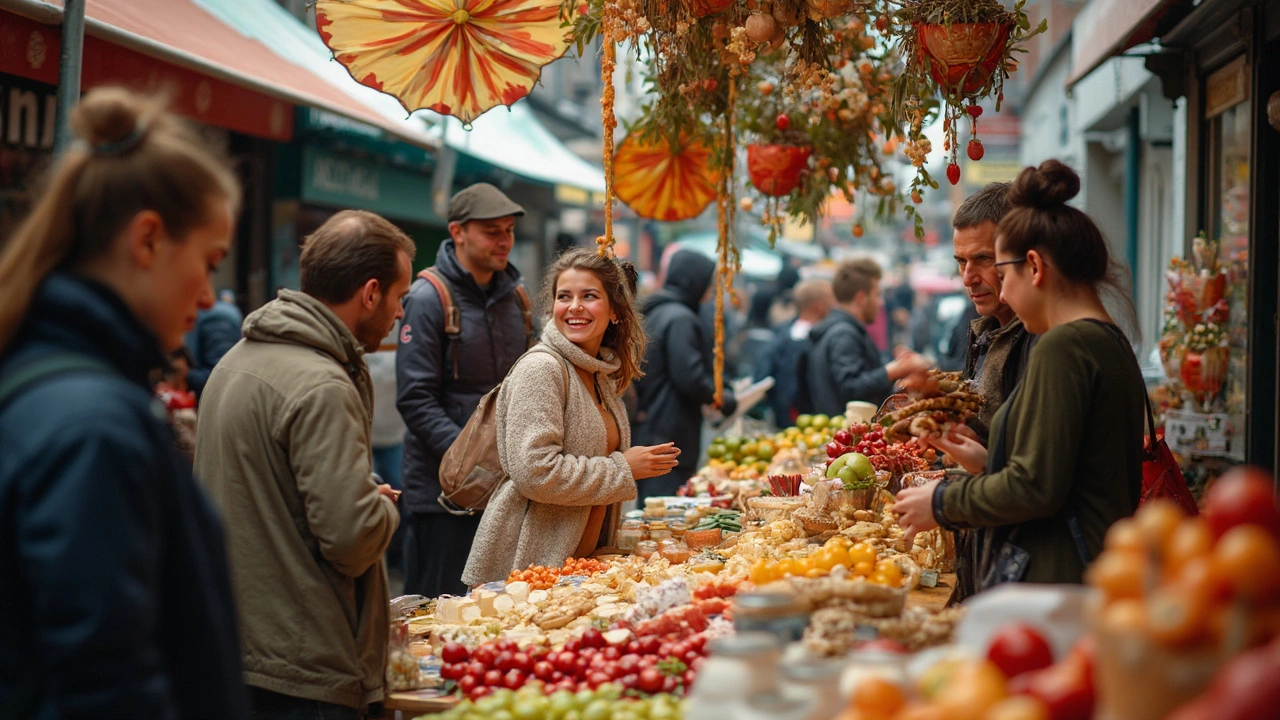Top Cultural Experiences to Explore in 2024: Unmissable Encounters Worldwide

If you crave more than just sightseeing, cultural experiences in 2024 are all about getting hands-on with the world’s traditions. Right now, people want trips that aren’t just for Instagram—they want real-life stories, human connections, and authentic memories.
You don’t have to go far to find culture. A street festival in your own city or a museum sleepover halfway across the globe can open your eyes. The best part? These moments often don’t require a big budget, just an open mind and a little curiosity.
Curious how to get started? You’ll find food you’ve never tasted, festivals you’ve only seen on TikTok, and art you can actually touch. Ready to make 2024 unforgettable? This list tackles exactly where to go and what to do—plus hacks to have the best time and avoid common tourist slip-ups.
- Immersive Festivals Worth Traveling For
- Local Food Markets and Culinary Workshops
- Art, History, and Hands-on Museums
- Community Rituals and Ancient Traditions
- Tips for Responsible and Meaningful Cultural Travel
Immersive Festivals Worth Traveling For
If you want to truly understand a place, go when the locals are celebrating. Festivals in 2024 are back in full swing, offering a peek into the traditions and daily lives of people worldwide. These cultural experiences connect you with the heart of a community—often way beyond what a typical tour offers.
Here’s a short list of well-known, worth-the-trip festivals happening this year:
- Rio Carnival, Brazil (February 28 - March 5): The world’s biggest party draws millions for parades, samba dances, and endless costumes. Buy tickets early for the Sambadrome and arrive a week ahead for the best street blocos. Locals say the Lapa neighborhood has the best pre-carnival energy.
- Kyoto Gion Matsuri, Japan (July 1 - 31): This centuries-old festival involves giant, hand-pulled floats and traditional music. Insider tip: Go on July 17 or 24 for the main parade, but explore the lantern-lit Yoiyama nights for fewer crowds and local street food.
- La Tomatina, Buñol, Spain (August 28): The world-famous tomato fight is one wild day. Bring old clothes, goggles, and book your ticket online—last year, 20,000 tickets sold out in minutes.
- Diwali, India (October 29 - November 3): Known as the Festival of Lights, Diwali lights up entire cities. Stay with a host family for home-cooked feasts and join in rangoli decorating and fireworks. Jaipur and Varanasi make it extra special, with massive public displays and street markets.
- Mardi Gras, New Orleans, USA (March 4): Dazzling parades, jazz in every bar, and king cake on every corner. Tip: Get out of the French Quarter for family-friendly parades in Mid-City and Uptown—locals love those the most.
Bigger isn’t always better. Sometimes the best festivals are the smaller, hyper-local ones with fewer tourists. For example, Portugal’s Festa de São João in Porto (June 23), where people hit each other with plastic hammers and eat grilled sardines, is loads of fun and deeply local.
If you want a quick glance at what time of year these major festivals happen, here’s a handy overview:
| Festival | Country | Month |
|---|---|---|
| Rio Carnival | Brazil | February/March |
| Gion Matsuri | Japan | July |
| La Tomatina | Spain | August |
| Diwali | India | October/November |
| Mardi Gras | USA | March |
Want to blend in? Avoid touristy costumes and take time to learn a few phrases or customs before you arrive. And always double-check festival dates, as they can shift year to year, especially those tied to lunar or religious calendars. The payoff? Real, unforgettable cultural experiences that no guidebook can match.
Local Food Markets and Culinary Workshops
Exploring local food markets is a shortcut to understanding the heart of any culture. In 2024, food travelers are heading straight for places where the locals actually eat and shop, not just tourist traps. For example, in Mexico City, Mercado de la Merced serves up fresh mango with chili, blue corn quesadillas, and rows of spices you probably can’t even name. In Istanbul, the Spice Bazaar overflows with baklava, Turkish delight, and mounds of saffron, and vendors love to share samples.
But why just shop when you can also cook? Culinary workshops are booming, and they offer a hands-on way to make everything from handmade pasta in Bologna to sushi in Tokyo. According to a 2023 travel survey, 65% of travelers said taking a cooking class helped them appreciate new flavors and led them to try local foods they’d never order otherwise.
- If you’re nervous about language barriers, many workshops now offer English sessions and printed recipes to take home.
- Themed tours, like Bangkok’s floating market food safaris or Barcelona’s tapas crawls, help you taste a variety of food without stressing about what to order.
- For families or groups, look for market-to-table cooking classes. Start with a guided walkthrough of a busy market, then head to a local’s kitchen to prepare your own meal. This combo gives you fresh ingredients and stories about their origins.
Here’s a quick comparison of popular culinary destinations and their signature food experiences to try in 2024:
| City | Market | Workshop Highlight |
|---|---|---|
| Tokyo | Tsukiji Outer Market | Sushi making class |
| Paris | Marché Bastille | French pastry baking |
| Casablanca | Central Market | Moroccan tagine workshop |
| Hanoi | Dong Xuan Market | Vietnamese street food class |
A pro tip: arrive at markets early in the morning for the freshest finds and the least crowds. If you’re taking photos, always ask before snapping vendors or their displays—respect goes a long way. Above all, be adventurous. Some flavors might surprise you, but that’s the fun of real cultural experiences through food.

Art, History, and Hands-on Museums
If you want your travels in 2024 to mean more, visiting art, history, and hands-on museums will do the trick. These aren’t your old “don’t-touch-anything” places. The world’s best museums now make you part of the story—sometimes literally.
Let’s talk numbers: According to the International Council of Museums, nearly 60% of major museums worldwide now have interactive or digital zones. You’re no longer just staring at paintings behind glass. You’ll find VR experiences at the Louvre, hands-on science labs at London’s Science Museum, and “build your own” art workshops in places like the Tokyo National Museum.
- The Louvre (Paris): Everyone knows the Mona Lisa, but dig deeper with their guided workshops and AR tours. The Louvre’s ‘Petit Louvre’ zone is tailored for kids, so even families can interact all day.
- The Smithsonian Museums (Washington, D.C.): Admission is free—yes, free. National Museum of American History lets you step inside the original Star-Spangled Banner immersive zone.
- Museum of Old and New Art (MONA) (Hobart, Australia): It’s quirky, bold, and you vote “love” or “hate” on each piece using their digital device. Even their toilets are part of the experience (really).
- The British Museum (London): Try their “Object Handling” desks to actually pick up and feel centuries-old items most people just read about. Their regular tours often include behind-the-scenes looks at how exhibits are built.
- Papalote Children’s Museum (Mexico City): Fun isn’t just for kids. Try their interactive science demos or design your own mobile in their art labs.
Trying out these cultural experiences can change your whole idea of what a museum is. You don’t just see history—you touch, smell, or even help make it. Book tickets ahead, as hands-on workshops fill up fast. Also, check if the museum offers late-night openings. That’s when you avoid the crowds and often get surprise events, like silent discos or VR treasure hunts.
If you’re tight on time or cash, look for free-entry days and city passes that include unique museums. Some places (like Amsterdam and Berlin) let you “museum hop” all day with a single pass. If you’re a student or under 26, almost every big museum in Europe cuts prices or even lets you in for free on certain days—just show ID.
| Museum | Location | Main Interactive Feature |
|---|---|---|
| The Louvre | Paris, France | Augmented reality tours |
| MONA | Hobart, Australia | Digital art voting |
| Science Museum | London, UK | Hands-on labs |
| Papalote Children’s Museum | Mexico City, Mexico | Design and science workshops |
The real tip? Go early in the morning or on weekdays. You’ll get the exhibits to yourself, more time with guides, and much better photos—no elbows in your shot. This is how you really make the most of what today’s art, history, and hands-on museums offer in your search for true cultural experiences.
Community Rituals and Ancient Traditions
Ever wondered what it really feels like to be part of another culture’s day-to-day life? Joining ancient traditions and local rituals is a fast track to understanding what makes a place tick. These moments go beyond sightseeing—they let you feel the pulse of a community, not just snap photos of it.
Across the world, many cultural experiences stand out because they’re living history. For example, in Japan, you can take part in a real tea ceremony, called "chanoyu." This isn’t just about sipping matcha; it’s about slowing down, following gentle steps, and appreciating every movement. It’s a blend of art and mindfulness that locals have practiced for centuries.
If you’re curious about Indigenous traditions, Mexico’s Day of the Dead (Día de los Muertos) remains one of the most powerful. This festival happens in early November and is about celebrating loved ones who’ve passed on. Families build altars, decorate with bright marigolds, and share special foods like pan de muerto. Visitors can respectfully join public celebrations in places like Oaxaca or Mexico City. According to the Mexican Government, about 7 in 10 families build family altars each year.
Want something more hands-on? Try traditional fire festivals in Scotland, such as Up Helly Aa in Lerwick. Locals dress as Vikings, parade through the streets, and burn a giant wooden ship. It’s noisy, wild, and surprisingly friendly. You’ll find that everyone, visitor or not, gets swept up in the energy.
Here are some key tips to join in these rituals without feeling awkward:
- Learn the background of the tradition—knowing basic meanings and dos & don’ts shows respect.
- Dress the part if it’s appropriate. For example, cover your shoulders for some religious ceremonies or ask before taking photos.
- Bring a guide or local friend if you’re unsure about what’s allowed.
- Listen more than you talk—and join when invited.
Get ready for some honest culture shock. Ancient traditions might surprise you, but they also offer memories way more memorable than your usual selfie spots. If you want to be more than a tourist in 2024, seek out these rituals—they’ll change the way you see the world.

Tips for Responsible and Meaningful Cultural Travel
Experiencing new cultures isn’t just about checking things off a list—it’s about respect and making a real impact, even if you’re halfway across the world. Responsible travel helps cultural experiences stay genuine and positive for everyone involved. Here’s how you can do it right in 2024.
- Learn the Basics Before You Go: Just saying "hello" or "thank you" in the local language goes a long way. Many travelers find simple phrases spark friendly conversations and open doors. Apps like Duolingo and Google Translate help a ton.
- Support Local Businesses: Skip international chains. Eating at family-run restaurants, shopping at neighborhood markets, or booking cultural experiences with local guides keeps money in the community. According to the UNWTO, 70% of tourism jobs globally depend on small businesses.
- Ask Before You Snap: Not everyone loves having their photo taken, especially during rituals or in sacred places. Always ask first. Some places even have clear "no photo" signs, so be sure to watch for them.
- Engage, Don’t Interrupt: Joining a local festival or ritual can be thrilling, but it’s not about being the center of attention. Observe, participate with respect, and ask permission before joining in.
- Take Only Memories, Leave Only Footprints: Don’t pick up souvenirs from nature or historic sites—just take photos and stories to share later.
- Choose Responsible Tour Providers: Look for tours or workshops that give back to their communities or protect the environment. Certifications like Travelife or Fair Trade Tourism are good signs you’re supporting ethical operations.
| Quick Facts | Why It Matters |
|---|---|
| Local guides know the real hotspots | They offer one-of-a-kind stories you won’t find online |
| Family-run hostels use local ingredients | Keeps traditions (and recipes) alive |
| Keeping groups small | Reduces disruption and helps you blend in |
Following these steps keeps your cultural experiences meaningful—not just for you, but for the people and places you visit. You’ll make more genuine connections, dodge the tourist traps, and maybe even get insider tips you can’t buy in any guidebook.
